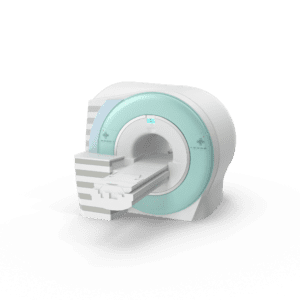Imaging Services Offered at North Star Radiology
Click on the following links for information about your exam:
Angiography | Arthrography | Body | Head | Musculoskeletal | Spine
Magnetic Resonance Imaging (MRI)

(MRI) uses a powerful magnetic field, radio waves, and a computer to produce detailed pictures of the body's internal structures. The images from MRI exams show much more detail about soft tissue structures than x-rays or CT scans. While the exams take longer to perform, MRIs often allow diagnosis and characterization of body parts and diseases that are not possible with other imaging modalities. These include the evaluation of the brain, neck, spine, abdomen and pelvis, joints, breast, and heart. They also provide detailed information about soft tissue conditions such as tumors and infections.
MRI is non-invasive and does not use ionizing radiation.
At North Star Radiology, we utilize a wide bore 3T machine, commonly referred to as an "open MRI". A 3T MRI has a stronger magnet and makes better images of organs and soft tissue than other types of MRIs do. The 3T MRI is the fastest diagnostic magnetic resonance imaging technology available.
Preparation (from RadiologyInfo.org)
Jewelry and other accessories should be left at home if possible, or removed prior to the MRI scan. Because they can interfere with the magnetic field of the MRI unit, metal and electronic items are not allowed in the exam room. These items include:
- jewelry, watches, credit cards, and hearing aids, all of which can be damaged
- pins, hairpins, metal zippers, and similar metallic items, which can distort MRI images
- removable dental work
- pens, pocket knives, and eyeglasses
- body piercings
In most cases, an MRI exam is safe for patients with metal implants, except for a few types. People with the following implants cannot be scanned and should not enter the MRI scanning area:
- cochlear (ear) implant
- some types of clips used for brain aneurysms
- some types of metal coils placed within blood vessels
- nearly all cardiac defibrillators and pacemakers
You should tell the technologist if you have medical or electronic devices in your body. These objects may interfere with the exam or potentially pose a risk, depending on their nature and the strength of the MRI magnet. Many implanted devices will have a pamphlet explaining the MRI risks for that particular device. If you have the pamphlet, it is useful to bring that to the attention of the technologist or scheduler before the exam. Some implanted devices require a short period of time after placement (usually six weeks) before being safe for MRI examinations. Examples include but are not limited to:
- artificial heart valves
- implanted drug infusion ports
- artificial limbs or metallic joint prostheses
- implanted nerve stimulators
- metal pins, screws, plates, stents, or surgical staples
Patients who might have metal objects in certain parts of their bodies may also require an x-ray prior to an MRI. You should notify the technologist or radiologist of any shrapnel, bullets, or other pieces of metal that may be present in your body due to prior accidents. Foreign bodies near and especially lodged in the eyes are particularly important.
